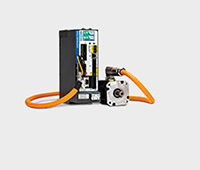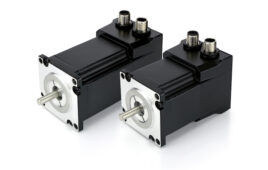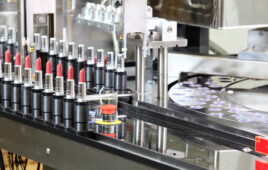From a global perspective, fish is one of the most important sources of protein for human consumption. Without aquaculture, this hunger for fish cannot be sated. The negative side effects of industrial aquaculture, such as high levels of pollution from medications, however, have scared off consumers in Europe in particular, causing sales to collapse a few years ago.
Aquaculture fish are bred for maximum production and for economic reasons they have significantly less living space than their cousins in the wild. This makes them especially susceptible to illness and parasites.
Many breeders, therefore, use large amounts of prophylactic medications, especially antibiotics. Growing criticism of the side effects has led to the use of medications being restricted in Europe.
Norway in particular has long endeavored to solve the problems of aquaculture. The country, where fish is the third most important export, has recently succeeded in nearly eliminating antibiotics. This was made possible by vaccinating the fish.
This procedure is difficult, however, because up to now each fish has had to be manually injected with the vaccine using a syringe. Considering the number of fish bred annually—1.4 million tons of salmon in aquaculture worldwide in 2010—this procedure has reached its limits. The machine builder Maskon has therefore turned to automation of the vaccination process. A system developed by the company, which requires just a single operator, can automatically anesthetize, sort, singulate, and vaccinate up to 20,000 fish per hour, depending on the model. This would previously have required four to six experienced “fish injectors.” The machine cannot only vaccinate substantially more fish, but also ensures a significantly higher level of quality of vaccination than humans can provide.

The core of the system consists of one (VX-4) or two (VX-8) vaccination modules each equipped with four vaccination stations. An image processing system first measures each fish and provides information used to calculate the individual point of injection. The entire vaccination station is then positioned accordingly by a linear motor from LinMot. This makes it possible to hit the optimal injection site for each fish with a precision of more than 98%. The length of the fish, as determined by the image processing system, is also used to calculate the depth of the injection for each individual fish. A sensor on the needle then monitors the injection process and the vaccine dosage for each fish. As a result, the mortality rate is less than 0.02%.
The stainless steel motors in the P01-37x120F-HP-SSC series from LinMot optimally comply with the hygiene requirements of the food products industry. They are made entirely of stainless steel (1.4404/316) and are characterized by their high protection class of IP69K. Gaskets were deliberately eliminated from the motor design. All connections are welded. The motors are also fully potted to prevent condensation from forming.

Thanks to these features and the closed, stainless steel surface, the INOX motors are ideal for use in machinery and equipment that processes food products or pharmaceutical goods. This was not the only reason that the customer decided to use these stainless steel motors. Space requirements were also a deciding factor, because the space available in the vaccine modules is tight. The compact form factor of the linear motors, which have no protruding parts or gearboxes, was appealing to the designers at Maskon. The use of pneumatic cylinders was eliminated as an alternative because they could not reach the speed and precision required by the application.
The compact stainless steel linear motors from LinMot used for positioning are watertight, and meet the most stringent hygiene regulations. This applies as well to the LinMot stator model PS01-37x120F-HP-SSC-R used in the vaccination unit. When used together with the appropriate slider, it is able to apply a constant force of up to 210 N over the entire range of its stroke. A high-clearance variant, PL01-19×350/260, with a stroke of 120 mm was selected for the vaccination unit. The motor is controlled by a model B1100-VF-HC servo inverter, also from LinMot, which supports force and speed control and is designed for integrating the linear motors into systems with a master axis controller.

The force or speed of the motors is thereby set by the master position controller through an analog differential signal of ±10V. Either the internal LinMot measurement system or a high-precision external measurement system can be used for feedback. Simple positioning controls can actuate the E1100-VF controller with stepper motor or directional pulse signals. For testing and commissioning, the VF controller can also be operated in point-to-point mode, with four freely programmable end positions.
LinMot
www.linmot-usa.com
Filed Under: Motors (linear), MOTION CONTROL





Tell Us What You Think!